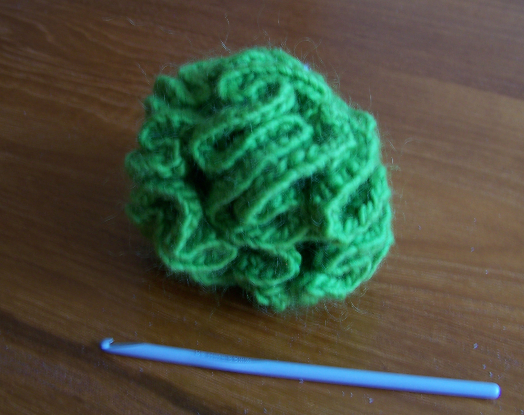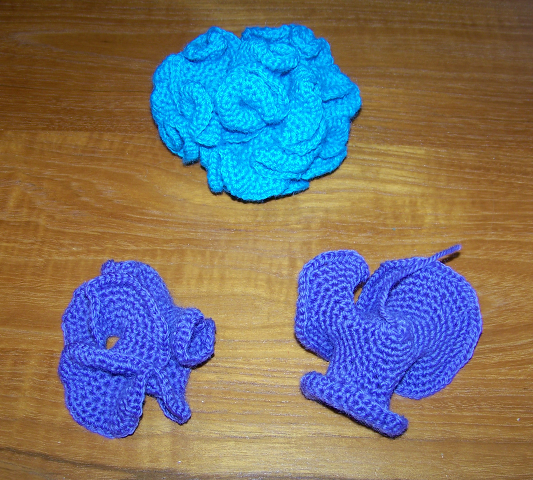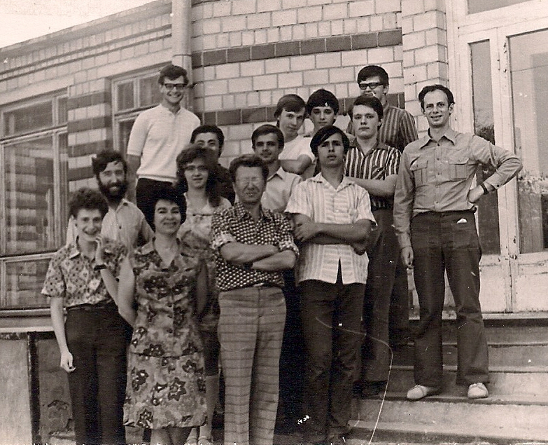Archive for the ‘My Career and Personal Life’ Category.
26th December 2021, 11:06 am
My friend, John Conway, had a trick to help him with tricky situations. Whenever he needed to make a non-trivial decision, he would ask himself, “What would John Conway do?” As he explained to me, he had in mind the public image he himself created. He liked the image and thought this mental trick helped him be a better, more productive, and not-to-forget, flashier person.
From time to time, I catch myself in need of a decision and ask myself, “What would John Conway do?” And he gave me the answer: I should change the question and ask myself, “What would Tanya Khovanova do?”
Share:





27th April 2021, 05:40 pm
A familect is a portmanteau word formed by squashing together two words: family and dialect. It means words that a family uses that are not a part of a standard vocabulary. This story is about two words that my son Sergei invented, and twenty years later, my family still uses them.
As you might know, I was married three times, and I have two sons, from two different fathers. These fathers were also married several times and had other children. My two sons are half-brothers, and they also have half-siblings through their fathers. Thus a half-sister of a half-brother became a quarter-sister. Inventing this term was quite logical for a son of two mathematicians.
As you can imagine, our family tree is complicated. One day Sergei pointed out that our tree doesn’t look like a standard tree and called it a family bush.
Share:





8th July 2020, 05:08 pm
I spend a lot of time working on my blog, and I used to think it would be nice to get some money out of it.
Years ago I got two emails from different ad agencies at the same time. They wanted to place ads at particular essays for $50 a year. I decided to give them a try.
My first correspondent wanted a link on my “Does Alcohol in Teens Lead to Adult Woes?” essay, connecting to a website offering help to alcoholics. I agreed. But when I read the actual text, I couldn’t stop laughing. The text they wanted to use was, “Many studies have already claimed that teenage alcoholism could lead to more problems later in life.” How ironic! This ad would follow my essay explaining that one of the studies is completely bogus. I rejected them.
The second agency wanted an ad accompanying the essay “Subtraction Problems, Russian Style.” I placed it. They wrote to me (and I reproduce it with all of their errors intact):
I really appreciate your efforts on this. As I checked the text link, I have seen that the text link has been label as “Sponsor ad”. Kindly omit or delete the word “Sponor ad:” or you may changed it to “Recommended site or Relevant Site” but I would love to prefer the text link be seen as natural meaning no labeled inserted on it.
They wanted me to pretend that I recommend their product. I was naive enough to think that I was selling space on my page, but what they really wanted was for me to lie that I like their product.
Before this experiment, I hoped to find some honest ads for my blog. After this experiment, I realized how much stupidity and falsehood are involved. Since then, I ignore all offers of ads that come my way. That’s why my blog is ad-free.
Share:





13th June 2020, 01:55 pm
I grew up in the USSR, where I was clueless about the race issues in the US. I have now lived in the US for 30 years, and still feel that there are many things about race that I do not understand. As a result, I am afraid to speak about it. I am worried that I’ll say something wrong. Recent events have encouraged me to say something. This is my first piece about race.
I came back to mathematics 10 year ago and started working at MIT. I love it. With some exceptions.
Many mathematicians are introverts or snobs or gender-biased. They are not usually friendly. I often walk down a corridor and people who are coming towards don’t notice me. If I say hello, they might not even reply or raise their eyes. It could be they are thinking about their next great theorem and do not notice me. It could be that I am not faculty and therefore do not deserve their attention. It could be that as a women I am not worth of their hello.
Soon after I started working at MIT, I was reminded of one of the reasons I left academia. It was this unfriendliness. But this time was different. First, I had grown a thicker skin. Second, I was working within a group. People who were working with me were nice to me. It was enough and so I stayed.
With time I adopted the same style: passing people without saying `Hello.’ Mostly I got tired of people not replying to my hello.
One day I was passing this man who, as had happened many times before, purposefully didn’t look at me. I thought my usual thought: another introverted/snobbish/gender-biased mathematician. Then I suddenly stopped in my tracks. My logic was wrong. This guy was Black. The unfriendliness of mathematicians is surely way worse for him than for me. It could be that he is looking at the floor for the same reason I do it: he is afraid that people will ignore his greeting. I failed to think about race deep enough before this realization. What happened next should have happened years earlier.
I took the initiative and the next couple of times I saw him, I said hello. This was all it took—two hellos—to change the whole feeling between us. The guy has a great smile.
Share:





4th April 2019, 12:41 pm
My friend Alice reminds me of me: she has two sons and she is never
straight with her age. Or, maybe, she just isn’t very good with numbers.
Once I visited her family for dinner and asked her point blank, “How old are you?” Here is the rest of the conversation:
Alice: I am two times older than my younger son was 5 years ago.
Bob: My mom is 12 times older than my older brother.
Carl: My younger brother always multiplies every number he mentions by 24.
Bob: My older brother is 30 years older than me.
Carl: My mom is 8 times older than me.
Alice: My older son always multiplies every number he mentions by 2.
How old is everyone?
Share:





27th February 2019, 03:02 pm
(Photo by Rebecca Frankel.)
When I was in grade school, one of the teachers called me Cave Lioness.
She hated my unruly hair, which reminded her of a lion’s mane. This
teacher was obviously very uninformed, for female lions do not have
manes.
This name calling had the opposite to the desired effect. I became proud of my mane and didn’t ever want to cut it. When I grew older, I opted for convenience and started to cut my hair short—sometimes very short.
Last year I was too busy for barbers, and my hair grew more than I
intended. As it turned into a mane, I remembered the story of this
nickname.
Share:





18th February 2019, 12:09 pm
16th January 2019, 04:50 pm
11th December 2018, 03:39 pm
I just got this picture from my friend Victor Gutenmacher, which I never
saw before. My 1975 IMO team is posing at our training grounds before
the Olympiad trip to Bulgaria.
Left to right: Boris Yusin, Yuri Ionin, Zoya Moiseyeva (front), Gregory
Galperin (back), me, Ilya Yunus, Valentin Skvortsov, Aleksandr
Kornyushkin, Sergei Finashin, Sergei Fomin (front), Alexander Reznikov
(back), Yuri Shmelev (front), Yuri Neretin (back), Victor Gutenmacher.
Our coaches are in the shot as well. Surprisingly, or not surprisingly,
all of them moved to the USA. Yuri Ionin, now retired, was a professor
at Central Michigan University. Gregory Galperin is a professor at
Eastern Illinois University. Sergei Fomin is a professor at the
University of Michigan. Victor Gutenmacher worked for BBN Technologies
and Siemens PLM Software, and is now retired.
There are two more adults in the picture: Valentin Anatolievich
Skvortsov, our leader and Zoya Ivanovna Moiseyeva, our deputy leader.
Skvortsov was working at the math department of Moscow State University
at that time. The University was angry that he didn’t block some
students with Jewish heritage from the team thus allowing them to be
accepted to Moscow State University without exams. I wrote a story of how Zoya persuaded Alexander Reznikov not to go to Moscow University to help Valentin. It ruined Alexander’s live, and didn’t even help Valentin. 1975 was Valentin’s last trip as the leader.
Share:





27th November 2018, 05:19 pm

I do not like making objects with my hands. But I lived in Soviet Russia. So I knew how to crochet, knit, and sew — because in Russia at that time, we didn’t have a choice. I was always bad at it. The only thing I was good at was darning socks: I had to do it too often. By the way, I failed to find a video on how to darn socks the same way my mom taught me.
Then I came to the US. I suddenly found myself in a rich society, where it was cheaper to buy new stuff than to spend the time doing things with my hands. So I happily dropped my craftsmanship.
After not working with my hands for 28 years, one day I needed hyperbolic surfaces for my classes and I couldn’t find any to buy. Hyperbolic surfaces are famous for providing an example when the Euclid’s Fifth axiom doesn’t work. These hyperbolic surfaces look flat locally, so you can continue a line in any given direction. If you draw a line on such a surface and pick a point that is not on the line, then you can draw many lines through the point that are parallel to the given line.
My students are more important than my dislike of crochet, so I decided to just do it myself. I asked my friend Debbie, who knows how to crochet, for advice, and she gave me more than advice. She gave me a hook and a piece of yarn and reminded me how to work the hook. She started me with a small circle. After that all I had to do was add two stitches for each stitch on the perimeter of the circle. The finished product is this green ballish thing that looks like a brain, as in the photo.
Outside the starting circle, each small surface segment of this “brain” looks the same, making the “brain” a surface of constant curvature.
I chose a ratio of 2 to 1, adding two new stitches for each previous stitch. With this ratio, my flattish surface started looking like a ball very fast. The length of the perimeter doubled for every row. Thus each new row I crocheted took the same total amount of time that I had already spent on the whole thing. All the hours I worked on this “brain,” I kept thinking: darn, it is so unrewarding to do this. Annoying as it was, the thing that kept me going was my initial decision to continue to use up all the yarn Debbie had given me. In the end, with this ratio, half the time I worked was spent making the final row.Share:







 I do not like making objects with my hands. But I lived in Soviet Russia. So I knew how to crochet, knit, and sew — because in Russia at that time, we didn’t have a choice. I was always bad at it. The only thing I was good at was darning socks: I had to do it too often. By the way, I failed to find a video on how to darn socks the same way my mom taught me.
I do not like making objects with my hands. But I lived in Soviet Russia. So I knew how to crochet, knit, and sew — because in Russia at that time, we didn’t have a choice. I was always bad at it. The only thing I was good at was darning socks: I had to do it too often. By the way, I failed to find a video on how to darn socks the same way my mom taught me.